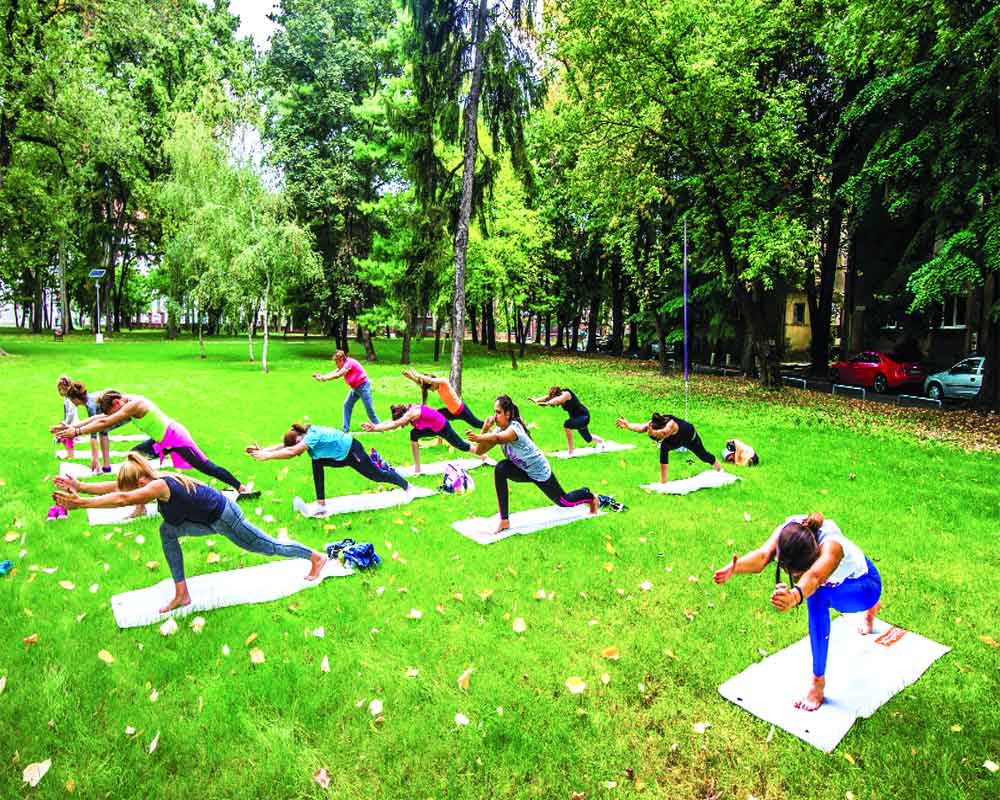In today’s fast-paced life where we have no time to guard our mind and body, yoga seems to be the perfect way to untangle both. This International Yoga Day, learn and practice it the right way
Yoga is a mind and body practice. Different styles of yoga combine physical postures, breathing ways and contemplation or relaxation. Yoga training is more than just gaining flexibility and strengthening immunity. However, they can help you lead a healthy and peaceful life if the training is followed right. There are many effects that you can follow on and off the yoga mat so you can also lead a life of pleasure and relaxation.
Exercise gratefulness
Yoga helps calm down your mind and concentrate on the effects in your life that you are thankful for. As you exercise gratefulness on the mat, you shall also embrace gratefulness in your diurnal life. Life is short to concentrate on effects that outrage you but should rather be appreciated for aspects that make you happy.
Let it flow
Yoga satisfies your inner peace and teaches you that nothing in this world is endless. Stress can destroy you mentally and harm you physically but yoga saves you and heals everything.
Live in the present
We all spend time planning and living in the future. Though the idea can be enticing, yoga teaches you to be present at the moment. Once you start living in the present, you tend to appreciate the moment more and love your life as it is.
Exercise ahimsa
While doing yoga, you take care of your body by not stretching it too far. You can also exercise it off the mat by being kind and compassionate toward other humans, creatures and all forms of life.
Will to evolve
During yoga, you increase your stamina and stimulate your body to be ready to evolve, encouraging yourself to be more accepting of the change. Similar is the amenability to evolve and learn every day in your life.
There are six branches of yoga and each of it represents a set of characteristics:
Hatha yoga: It is the physical and internal branch that aims to raise the body and mind
Raja yoga: It involves contemplation and strict adherence to a series of correctional ways known as the eight branches of yoga
Air yoga: It is a path of service that aims to produce a future free from negativity and egoism
Bhakti yoga: It aims to establish the path of devotion, a positive way to channel feelings and cultivate acceptance and forbearance
Jnana yoga: It is about gaining wisdom, following the path of scholarly and growing your mind by studying and educating yourself
Tantra yoga: It promotes self-love, respect and acceptance, and the consummation of a relationship
There are numerous types of yoga practices all over the world to keep you mentally and physically fresh but have you ever heard about prana flow? When restated from Sanskrit, prana means “breath of life,” “spirit- energy,” “vital energy,” or “life force energy.
Various yogis who have devoted their lives to prana and yoga have endured an inflow of energy through their spirits over the time. The inflow of energy is harmonious and flows organically through all corridors of the body to keep it active and healthy and builds the vulnerable system for the well-being of the body as well as rapid-fire mending in case of injuries and hurt.
The movement of breaths is associated with prana inflow — as you gobble, the energy is drawn overhead and as you exhale, energy flows over.
Prana promotes the actuality of the energy throughout the macrocosm and within ourselves, which is responsible for every voluntary and involuntary action in our body — from breathing to thinking. It is also responsible for the quality of our studies, energy and rotation to different corridors of our body.
It promotes the actuality of an energetic body away from our physical body that is present in the macrocosm. The subtle or energetic body is associated with one’s air or vibe that helps a yogi feel someone’s additional energy when they meet them.
The energetic body consists of a network of channels, more frequently known as the nadis, made of the main central channel, two side channels — the sun and the moon and thousands of lower channels.
On the right side of the spine, the powers of wrathfulness, covetousness, aversion, apprehension, dislike and ignorance are flowing, meaning counting further on the negative or the hotter side of the feelings. Therefore, this side is frequently regarded as the ‘sun’ channel of the energetic body and is represented as ‘ha’ in Sanskrit. While on the left side of the spine, the comparatively cooler powers like that of desire, attachment, love, like and pining are flowing. Hence, naming the left side is the ‘moon’ channel of the body and is represented as ‘tha’ in Sanskrit.
Right in front of the spine runs the central channel of the energetic body. The ultimate thing of hatha yoga through prana inflow is to combine the side channels into the central channel so they can come together as one energy inflow through physical manipulation of the body.
When the main idea of the prana inflow is achieved, a yogi has achieved ‘samadhi’ or full integration. Pure wisdom, bliss and pleasure come as an integral part of the yogi and flow through his central channel of the energetic body.
There are various poses and asanas that you can employ and will help in the energy inflow in your body. Some of which are rocking forward fold, empty coat sleeves, breath of joy, high jab kicks, victory pose and tadasana.
Shruti Shah,Yoga Teacher, Founder- Flow with Shruti

























